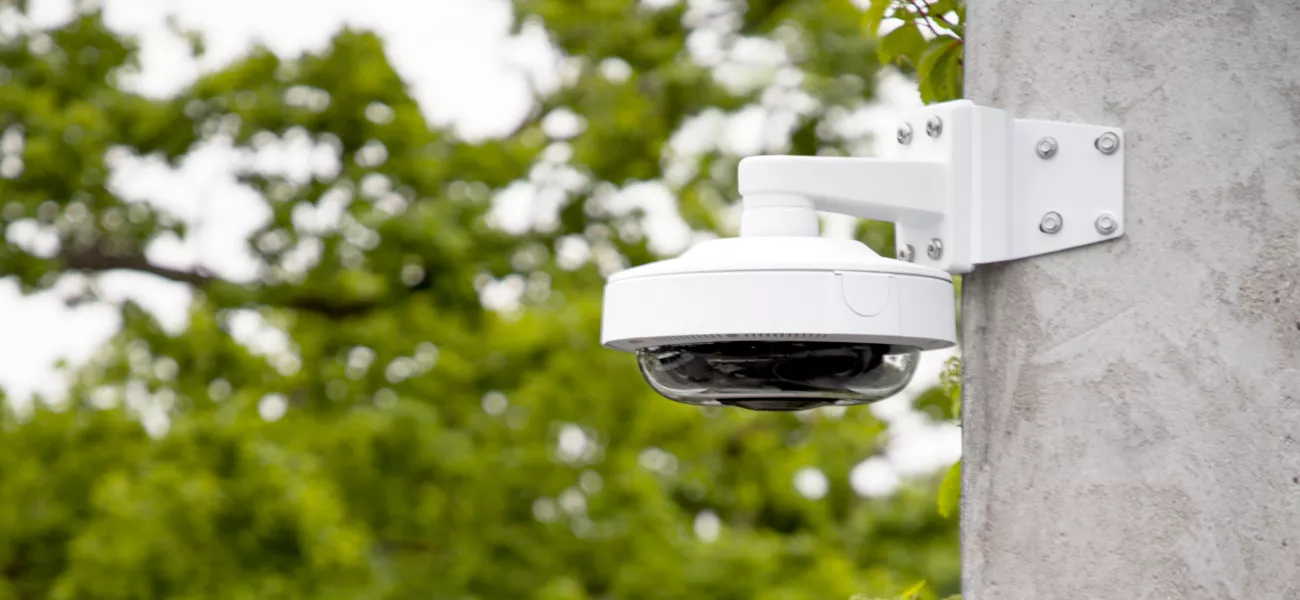
It is imperative that we all strive to be more environmentally friendly. Environmental, Social and Governance ratings, or ESG, have become key benchmarks of business sustainability and the positive impact they have on wider society. This blog post helps eco-conscious companies make more informed and sustainable choices for their surveillance systems.
In the effort to make your business more environmentally responsible, we know that every improvement counts. Security systems are no exception. With EU legislation now requiring companies to hit sustainability targets, the reality is minimizing your environmental footprint is only going to get more important. So, whether purchasing new or updating existing solutions, you want ones that can definitively contribute toward these objectives. But knowing what to look out for can be tricky.
I recently discussed this with Ulrika Renmark, Sustainability Sales Engagements Director at Axis. We asked ourselves, “How can we help customers make more informed choices? What should they be looking out for in a vendor or partner when they are planning to invest?” It’s a complex question that requires you to look across the entire (and rather lengthy) value chain of your purchases.
How can we help customers make more informed choices?
The challenge we came up against is that there is no common standard that captures all the information you need, especially when it comes to energy and power consumption. Encouragingly, independent organizations like Ecovadis who provide ESG ratings are emerging, yet they aren’t foolproof and not everyone is using the same benchmarks.
To keep things simple, we identified three key considerations to help guide your decision making when purchasing surveillance systems, spanning energy consumption, the materials that go into the products, and understanding their entire lifecycle.
Reducing energy consumption
When it comes to energy consumption, there are two main questions you need to ask: how much energy does the system need? And can it be reduced? Analyses have shown that it’s the cameras that consume the most energy in a surveillance system, around 60 to 80 percent over the product’s lifecycle. And most of the consumption occurs during the product usage phase (as opposed to its production/shipping etc.).
But once again it isn’t as straightforward as simply finding the cameras with the lowest power draw figures. It is important to look at the system as a whole, how components complement one another and work together to reduce the overall consumption levels. For example, light-optimizing technology (like Axis Lightfinder) or infrared sensors can alleviate the need for powerful flood lighting. Other products might let you disable certain elements like LEDs or unnecessary heating features in certain ambient conditions which can have tremendous long-term impacts on overall energy consumption.
The other big hitter when it comes to energy usage is recording storage. Data centers are huge energy consumers, with the amount of cooling required to keep them running gobbling up vast amounts of energy. With AI systems now being integrated for deep learning and model training, the computational power and resulting power draw these centers demand continues to skyrocket. So, as customers putting ever increasing demands on these services, it is vital that we reduce the amount of storage we require where we can.
One highly effective way of doing this is by reducing your recorded video’s bit rate. With the right video compression technology you can both lower your bandwidth requirements and also reduce the overall required server storage space by an average of 50 percent. And in some cases, by as much as 90 percent. Not only does this have a very positive effect on your sustainability rating, you’ll likely see substantial cost savings over time too.
Use of hazardous or questionable materials
The materials that go into your surveillance products also need to be considered. Be on the lookout for hazardous raw materials such as PVC (polyvinyl chloride) or potentially toxic and carcinogenic BFRs/CFRs (brominated and chlorinated flame retardants). Really interrogate the data your potential vendor has on offer, looking specifically for current percentage of BFR/CFR/PVC-free products as well as their future goals and timelines to rid themselves of these materials entirely (typically found in annual sustainability reports).
Today, many manufacturers are also adopting a green design approach to their R&D and product design. It is a big step towards phasing out hazardous or ecologically questionable materials and turning to more sustainable alternatives. For example, using recycled materials like renewable carbon-based plastic helps conserve natural resources.
Apart from the environmental and health issues, the sourcing of sustainable raw materials must also guarantee that only conflict-free minerals are used. Minerals, such as gold, tin, and tungsten, must not be mined in conflict areas where sales may prolong armed conflicts. Ethical vendors will enforce a code of conduct across their value chains, regularly auditing their own suppliers and holding them to strict standards.
Having a lifecycle perspective
Discarded electronic and electrical goods, e-waste, is the world’s fastest-growing waste stream. So much so that the UN developed its Sustainable Development Goals (SDGs), including objectives to make industry sustainable. As such, it’s crucial that you look at any surveillance purchase from a holistic lifecycle perspective, exploring how close to a cyclical model any potential vendor is.
It raises questions such as how sustainable the manufacturing process is and if the products can have a second life? Rather than ending up in a landfill, can they be repaired, reused, or upcycled when they reach end of life?
Businesses are exploring how to close the loop, from raw material back to raw material. For example, Apple has created disassembly robots to help recover rare earth elements, steel, and tungsten from discarded mobile phones. Axis itself offers software support of a minimum of 6 and up to 13 years, is using more recycled materials, and is dedicated to improving its entire value chain’s sustainability standards.
You take the first step because you have to. You take the second step because you want to
These are tough, but important questions to ask. It might seem like a tall order to get on top of all this information, but your partners and vendors should be able to help you. Ask, and if necessary, push them to provide information pertaining to these three areas. Good vendors will have committed themselves to transparent, science-based targets, and certainly have at least preliminary benchmarks of their progress. If they can’t provide anything, then perhaps they’re not the right fit for you.
Talking to Ulrika, I really liked something she said about companies who have committed to really improving their environmental sustainability: “You take the first step because you have to. You take the second step because you want to.”
And based on the many companies that I get in contact with frequently, I know this to be true. In the end, it is not just about the cost. It’s about embracing change for good, doing your part. And every step in the right direction, no matter how small, counts.
